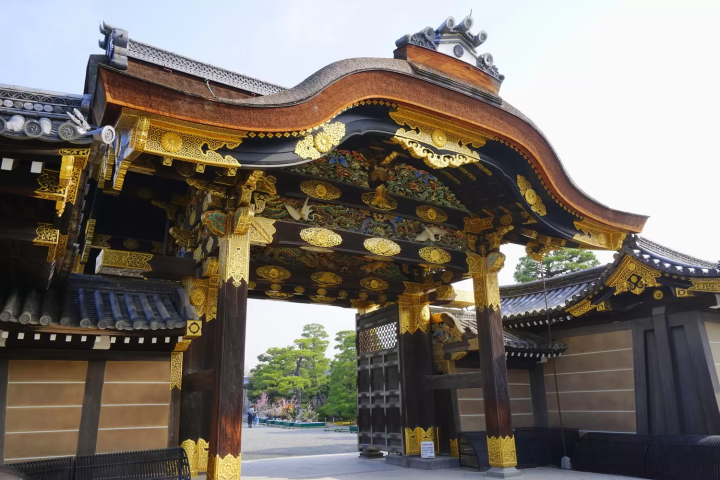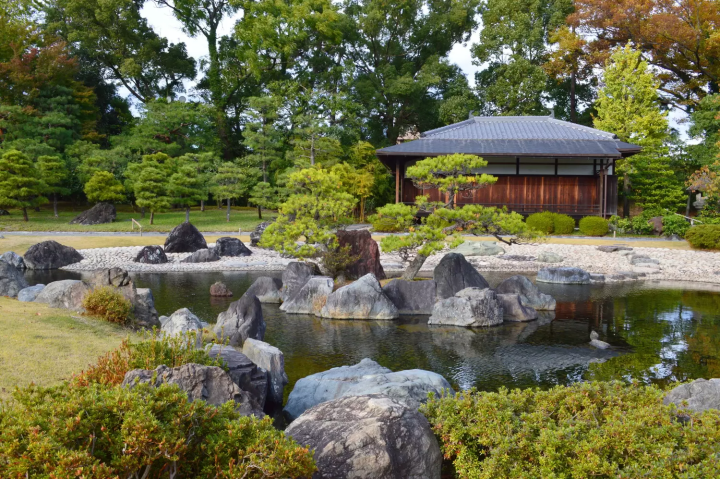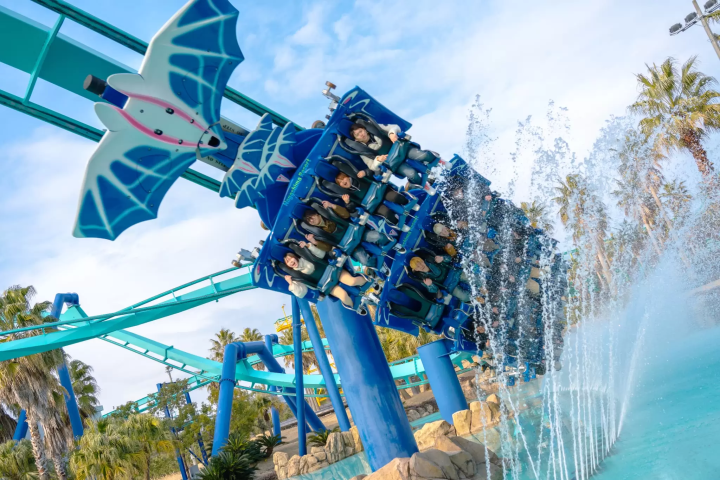Nijo Castle: Highlights, Seasonal Events, and Budget-Friendly Tickets

Nijo Castle, a World Heritage site in Kyoto, is a popular tourist attraction. It was the base for the Tokugawa shogunate and played a significant role in Japanese history. This article features prominent highlights, such as Ninomaru Garden, alongside history, business hours, and seasonal events.
Nijo Castle
Nijo Castle, located in the center of Kyoto, is a popular destination along with Kinkakuji and its Golden Pavilion and Fushimi Inari Shrine.
The castle experienced a major change in history from the Edo Period to the Meiji Period. Visitors will be greeted by cherry blossoms and autumnal foliage in the lovely Japanese garden.
It's typical for many Japanese students to visit Nijo Castle. The writer of this article, who grew up in the Kanto Region, also visited the castle on a school trip. Those visiting here may also see groups of bustling students.
This article features highlights, history, seasonal events, access, and budget-friendly tickets. We've also included recommendations for nearby cafes and accommodations.
Contents
1. Nijo Castle History
2. Five Highlights of Nijo Castle
3. Restoration
4. Seasonal Events at Nijo Castle
5. Guided Tours
6. Business Hours and Admission
7. Access and Budget-Friendly Tickets
8. Cafes near Nijo Castle
9. Accommodations near Nijo Castle
10. Other Tips for International Visitors
Nijo Castle History
Nijo Castle was originally built in 1603 by Tokugawa Ieyasu (1543-1616), the first shogun of the Tokugawa Shogunate.
While the shogunate was based in Edo (present-day Tokyo), Gosho Palace was where the Emperor and imperial family resided in Kyoto. Nijo Castle was constructed as a base to guard the Emperor and accommodate the shogun when he visited from Edo.
A two-year expansion started in 1624, in which the castle grew to its current size. In 1626, Emperor Go-Mizunoo made an imperial visit to Nijo Castle, with a celebration lasting for five days.
Tokugawa Iemitsu (1604-1651), the third shogun, visited Kyoto with an army of 300,000 in 1634, solidifying the bond with the Emperor and strengthening the shogunate.
Nijo Castle was the symbol of samurai dominance. However, it also turned out to be the place where the shogunate ended.
In 1867, Tokugawa Yoshinobu (1837-1913), the fifteenth shogun, announced the Restoration of Imperial Rule at the Ninomaru Goten (Second Palace) within the Nijo Castle. This was the beginning of a new era in Japan.
Nijo Castle became the Emperor's villa and was bestowed to Kyoto City in 1939. It became open to the public and registered as a UNESCO World Heritage site in 1994.
Five Highlights of Nijo Castle
There are various types of architecture and gardens inside Nijo Castle. The following is a list of five renowned facilities. The tour takes roughly one to two hours.
Karamon Gate

Photo by Pixta
Karamon, the main gate of the Ninomaru Goten, was reportedly built in the renovation between 1624 and 1626. "Kara" refers to a Chinese-style design in Japanese, and the gate is decorated with lions in chinoiserie.
There is another Karamon at Nikko Toshogu Shrine, which Tokugawa Iemitsu renovated between 1634 and 1636. It might be interesting to try to compare the design of the two gates.
Ninomaru Goten

Photo by Pixta
Ninomaru Goten (Second Palace) was built during the renovations between 1624 and 1626. There are 33 rooms spread across six buildings. The interior is decorated with works by the Kano school, one of the main schools of Japanese painting, but also carvings on transoms and ornamental metal fittings.
Visitors walking the corridor will hear a squeak, almost resembling a nightingale singing. This is called uguisu-bari (nightingale floor), a guard system against intruders.
We tried listening to the sound during our school trip. However, the large group of visitors made it impossible to hear the uguisu-bari. If you have a chance to visit when there are few visitors, do try listening to the sound!
Closed Days
Since Ninomaru Goten is a designated cultural asset, it will be closed every Tuesday in January, July, August, and December. It will also be closed from December 26 to 28 and January 1 to 3.
Please note that taking photographs or videos of the interior is strictly prohibited.
Ninomaru Garden

Photo by Pixta
The palace is surrounded by Ninomaru Garden, a Japanese-style garden. It was designed to represent the world of ancient Chinese immortals.
It was originally built from 1602 to 1603 and renovated in 1626. The landscape was completed after additional changes.
Honmaru Goten Palace

This palace, surrounded by a moat, is located in the center of the castle. Built by Tokugawa Iemitsu in 1626, it was lost in the fire of 1788.
The current building was relocated from the north of the Kyoto Gosho Palace in 1894 at the request of Emperor Meiji (1852-1912). At the time, Nijo Castle was used as a villa for the imperial family.
As of April 2023, the Honmaru Goten is closed for restoration.
Seiryuen Garden

Photo by Pixta
This garden, built in 1965, features a mixture of Japanese and Western styles.
Located on the premises are Warakuan, a tea house where visitors can take a break, and Kountei, which is used for special events. Be sure to take a look after visiting the Ninomaru Goten.
The Restoration of Nijo Castle
A large-scale restoration project at Nijo Castle starting in 2010 is scheduled for completion in 2030. As of April 2023, the Honmaru Goten is closed.
Since some of the facilities will be closed during the restoration, please check the official website for details.
Seasonal Events at Nijo Castle

Photo by Pixta
There are about 300 cherry trees at Nijo Castle, so visitors can enjoy various types of cherry blossoms annually from late March to mid-April.
Along with the numerous events held at the Sakura Festival in 2023, the trees will be illuminated at night from March 17 to April 15.
From mid-November to early December, visitors will be greeted by the fall foliage of trees such as cherry, maple, ginkgo, and dodan-tsutsuji (Enkianthus perulatus). In addition to the lit-up trees at night, there will also be various events.
Guided Tours of Nijo Castle
Guided tours of the facilities, which were suspended due to COVID-19, will resume temporarily from March to May 2023. Please check the official website for details.
Since there are many overseas visitors, a multi-lingual audio guide (Japanese, English, Chinese, Korean, French, Spanish, and German) is available for 600 yen.
Pamphlets are also available in seven languages (Japanese, English, traditional and simplified Chinese characters, Korean, Spanish, French, and German).
Business Hours and Admission
The business hours and admission details are listed below.
Business Hours
Regular Season: From 8:45 to 17:00 (The main entrance will close at 16:00).
Ninomaru Goten entrance will close at 16:10. The hours are subject to change in spring and autumn.
Closed Days
From December 29 to 31. Ninomaru Goten will be closed on other days as well.
Admission
Adults: 800 yen, Junior High and High School Students: 400 yen, Elementary School Students: 300 yen (Normal tickets)
Adults: 1,300 yen, Junior High and High School Students: 400 yen, Elementary School Students: 300 yen (Tickets including access to Ninomaru Goten)
Access and Budget-Friendly Tickets

Photo by Pixta
Nijo Castle is accessible by bus, subway, or JR lines.
Subway: From Nijojo-mae Station (Kyoto Municipal Subway Tozai Line), it is a short walk to the castle. It is a 17-minute walk from JR Nijo Station.
Bus: From JR Kyoto Station, take the City Bus (route number 9 or 50) and get off at Nijojo-mae Bus Stop. It is a short walk to the castle.
Address: Kyoto, Nakagyo ward, Nijojo-machi 541
Budget-Friendly Tickets
The Subway & Bus One-Day Pass (Adult: 1,100 yen/person) and Subway One-Day Pass allow visitors to ride public transportation in Kyoto on a fixed fare. There is also a 100 yen discount on admission to Nijo Castle, so don't forget to buy them.
By using the JR Kansai WIDE Area Pass, international visitors can ride the Shinkansen, express trains, and local trains from Kyoto to Osaka, Kobe, and even Okayama.
The Kansai Thru Pass allows ticket-holders to ride the subways of Osaka, Kyoto, and Kobe, along with the Keihan, Hankyu, Kintetsu, and Nankai lines. Be sure to take a look!
Cafes near Nijo Castle
Some travelers may want to take a break during their visit.
While there are many cafes in the area, the following are two recommended eateries: one inside Nijo Castle and another near the castle.
Maeda Coffee
Maeda Coffee is located inside Warakuan, the tea house in Seiryuen Garden.
The franchise was founded in 1971, with its main store in the center of Kyoto in Karasuma. The popular cafe hand roasts the beans and serves an entirely homemade menu. They also have store locations in Beijing and Shenzhen City in China.
Cafe Bakery Masusan
This cafe near Nijo Castle was founded about 50 years ago. They serve sandwiches, toast, and cake alongside stylish beverages.
Accommodations near Nijo Castle
There are many hotels in the area since the castle is in the center of Kyoto.
ANA Crowne Plaza Hotel Kyoto

Picture courtesy of Booking.com
ANA Crowne Plaza Hotel Kyoto directly faces Nijo Castle. In addition to a grand ballroom, it is furnished with a pool and sauna.
The hotel also has a teppanyaki, French, and Japanese restaurant on the first and basement floors.
Guest House Oumi

Picture courtesy of Booking.com
Those looking for an affordable Japanese-style lodging should check out Guest House Oumi. During the off-season, the room fare costs about 5,000 yen on weekdays. The inn has both dormitory-type and private rooms.
Take a look at Booking.com and Agoda for additional accommodations.
Search for a hotel in Kyoto on Booking.com
Search for a hotel in Kyoto on Agoda
Other Tips for Overseas Visitors
Wi-Fi
While Kyoto Wi-Fi is free and available throughout the prefecture, the number of places where it can be used is limited.
Since Nijo Castle welcomes many tourists, it might be wise to have a portable Wi-Fi router. This is especially true if you don't want to lose sight of your friends.
MATCHA is now offering overseas visitors a 20% discount coupon for Ninja Wi-Fi. Check out this MATCHA article for details, and give it a try.
Click Here to Receive a 20% Discount on the Ninja Wi-Fi

Rental Car
While Kyoto boasts a reliable public transport system, it might be ideal for those planning a visit of Osaka and Kobe to use a rental car. This way you won't have to worry about buses and trains.
Nippon Rent-A-Car is one of the major car rental companies in Japan. MATCHA is offering a 10% discount coupon on their vehicles.
Those visiting Kyoto should consider a tour of the Kansai Region with a rental car.
Click Here to Receive a 10% Discount on Nippon Rent-A-Car Services

Enjoy Nijo Castle and Kyoto
Kyoto is full of attractions and historical sites. Use this article as a guide and have fun at Nijo Castle and Kyoto!
Read also
Main image by Pixta






































![[Coupon Available] Attention Overseas Winter Sports Fans! Nagano's Sports Depot Has Evolved](https://resources.matcha-jp.com/resize/720x2000/2026/01/05-254819.webp)
![[2 hours from Tokyo ] 10 Quiet and Breathtaking Views of Mount Fuji in Yamanashi Hokuto City , Yamanashi - Part 2](https://resources.matcha-jp.com/resize/720x2000/2025/12/16-253037.webp)